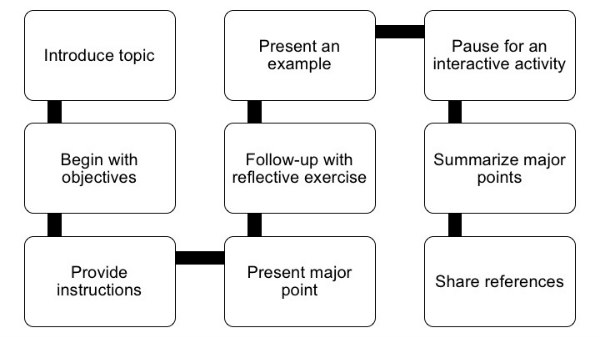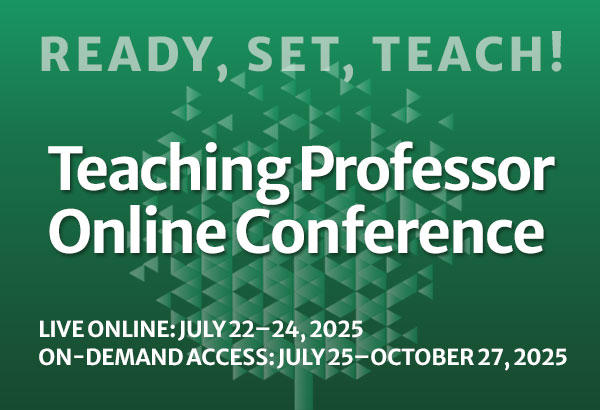We all know the classic thought experiment involving a tree falling in the woods, but have you heard the one about online lecturing: If a faculty member posts a microlecture video to the LMS, and students view it, has learning occurred? While we may never know if a falling tree makes a sound, we can determine whether students are engaging with our microlectures by applying the principles of pause procedure.
Pause procedure incorporates many of the best practices when it comes to online and active learning, including creating instructor presence, emphasizing metacognition, and aligning with outcomes-based learning. Major et al (2015) define it as “An interactive instructional approach whereby mini-lectures are interspersed with pauses. These strategic pauses provide an opportunity for students to review and clarify course material.” Applying this definition to microlectures, pause procedure becomes the deliberate plan to build in moments that guide students through reflections on the course materials, the way they are processing them, and the thinking behind that process.
When it comes to practical application, the following template provides an outline to help us plan, organize, and structure our microlectures to include these pauses:

There are a myriad of reflective exercises and interactive activities that you can incorporate throughout the microlecture, and you should choose one that suits your course, instruction-level, learning objectives, assessments, content, and teaching style, including:
- One-minute papers. Provide students with an open-ended prompt on a specific aspect of the topic that presumably they can cover in about a minute. You can follow-up on these reflections as part of a journal entry, discussion board, or exam question.
- Devil’s advocate. Ask students to consider an argument related to the topic. In the first paragraph, they have to state a claim and provide evidence supporting one side of the debate. In the second paragraph, they do the same for the opposing side. This activity is particularly engaging when followed up in a discussion board with two opposing threads.
- Knowledge check-ins. These quick, no-stakes quizzes allow you to “check-in” with students about the topic you just completed. Check-ins should be short (five questions) and objective in nature. When doing these as part of a microlecture, make sure to review the answers in real time and provide explanation.
By incorporating pause procedure through reflections and activities, we ensure that when a faculty member posts a microlecture video to the course, and a student views it, they do indeed learn.
References
Major, C., Harris, M. S., & Zakrajsek, T. (2015). Teaching for learning: 101 intentionally designed educational activities to put students on the path to success. Taylor and Francis, Inc.
Dutill, J. & Wehler, M. (2017) Microlecture Template. The Online Lecture Toolkit. Retrieved from https://www.onlinelecturetoolkit.com/
Works Consulted
Rowe, M.B. (1980). Pausing principles and their effects on reasoning in science. New Directions for Community Colleges, 31, 27-34.
Ruhl, K., Huges, C., & Schloss, P. (1987). Using the pause procedure to enhance lecture recall. Teacher Education and Special Education, 10, 14-18.
Judith Dutill, MA and Melissa Wehler, PhD are project managers for The Online Lecture Toolkit, an open access resource designed to make the application of evidence-based strategies accessible for educators and instructional designers at every level of technological fluency. Judith Dutill is an instructional designer at Millersville University and an adjunct faculty member at Harrisburg Area Community College. Melissa Wehler is the Dean of Humanities and Sciences at Central Penn College.






